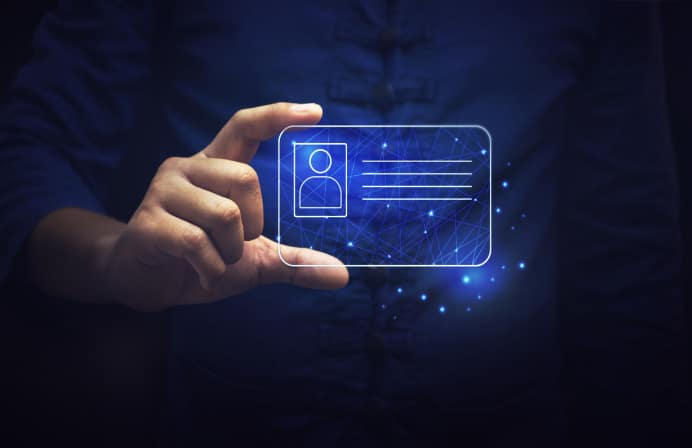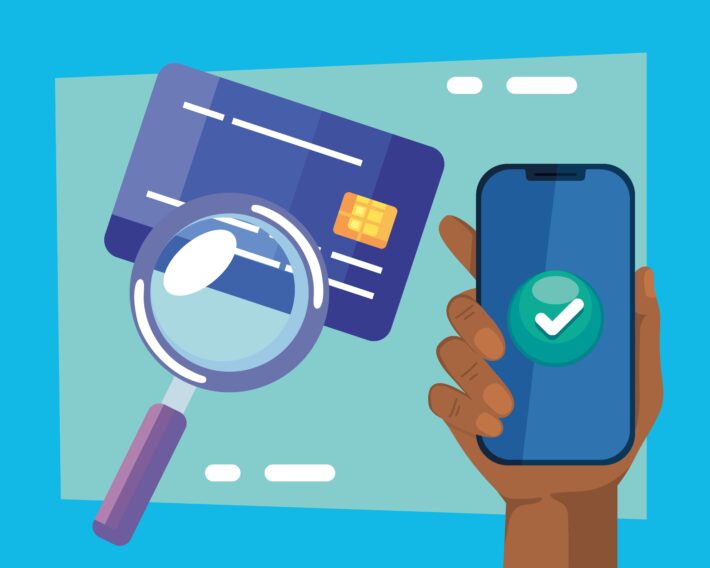Digital Identity Verification: Trends & Best Practices

In today’s digital age, the importance of digital identity verification cannot be overstated.
From biometric verification to AI-powered solutions, the landscape is constantly evolving.
This guide explores current trends, best practices, and benefits of digital identity verification.
Enhanced security, improved customer experience, and cost savings are at stake.
Stay informed and learn how to protect yourself and your business from identity theft, data breaches, and legal consequences.
What Is Digital Identity Verification?
Digital Identity Verification refers to the process of confirming an individual’s identity electronically, typically through the use of personal information, biometric data, or other verification methods.
This process plays a crucial role in various online interactions, from opening a bank account to accessing secure websites. By verifying the authenticity of an individual’s identity, digital identity verification helps in establishing trust between users and service providers in the digital realm. It enhances security measures by ensuring that only authorized individuals can access sensitive information or perform specific actions. This verification process also aids in preventing identity theft and fraudulent activities by adding layers of protection against malicious actors. Digital identity verification is essential for creating a secure and trustworthy online environment.
Why Is Digital Identity Verification Important?
Digital Identity Verification plays a crucial role in maintaining secure online transactions, protecting sensitive user data, mitigating cybersecurity risks, and preventing identity theft.
By utilizing advanced technologies such as biometric authentication and two-factor authentication, digital identity verification ensures that only authorized individuals have access to personal accounts and information. This not only safeguards against fraudulent activities but also helps build trust between users and service providers.
In today’s interconnected digital ecosystem, where data breaches and identity fraud are prevalent, the validation of one’s digital identity is paramount for ensuring secure interactions and upholding data privacy standards.
What Are the Current Trends in Digital Identity Verification?
The current trends in Digital Identity Verification encompass the adoption of advanced tools and services that offer seamless online verification methods, catering to the evolving needs of the identity verification industry.
This shift towards more sophisticated verification processes is driven by the increasing demand for secure and efficient digital interactions. Biometric authentication, such as facial recognition and fingerprint scans, is becoming a popular choice for enhancing identity verification accuracy. The use of AI-powered solutions enables real-time analysis of identity documents and behavior patterns to detect fraudulent activities. Companies are also exploring blockchain technology to create tamper-proof identity verification records, ensuring data integrity and security.
Biometric Verification
Biometric Verification utilizes unique physical characteristics such as fingerprints, facial features, or iris patterns to confirm an individual’s identity, enhancing the security and accuracy of identity verification processes.
This advanced technology has revolutionized security measures across various industries, from banking and finance to healthcare and government sectors. Biometric authentication methods include fingerprint scanning, facial recognition, iris or retina scans, voice recognition, and even hand geometry. Each method offers distinct advantages in ensuring accurate and reliable identity verification.
For instance, fingerprints are widely used due to their consistency and uniqueness. Facial recognition has gained popularity in mobile devices for quick and convenient access. These biometric tools not only enhance security but also streamline authentication processes for users, offering a seamless and efficient experience.
AI-powered Identity Verification
AI-powered Identity Verification leverages machine learning algorithms and artificial intelligence to streamline verification processes, enhance fraud prevention measures, and achieve higher accuracy in verifying user identities.
This technology plays a crucial role in tackling fraudulent activities by constantly analyzing patterns and anomalies to flag potentially suspicious behavior. In the case of real-time verification, AI systems can quickly validate identities and detect any inconsistencies, ensuring secure transactions and interactions. The automation of verification systems also significantly reduces manual errors and processing time, offering a seamless experience for users while maintaining a high level of security. The integration of AI-powered solutions in identity verification marks a significant advancement in safeguarding digital identities and combating cyber threats.
Mobile Verification
Mobile Verification enables users to verify their identities using mobile devices, offering convenient and secure login processes that utilize various verification techniques such as SMS verification or mobile biometrics.
This method of identity authentication plays a significant role in enhancing security measures, ensuring that only authorized individuals can access sensitive information or perform transactions. By employing mobile-based verification, users can experience a seamless and hassle-free login process, eliminating the need to remember complex passwords or security questions.
The use of SMS verification involves sending a one-time code to the user’s mobile device, which adds an extra layer of security by requiring a unique code for access. Mobile biometrics technology, such as fingerprint or facial recognition, offers a user-friendly experience while enhancing the verification process’s accuracy and reliability.
Blockchain-based Identity Verification
Blockchain-based Identity Verification leverages the decentralized and secure nature of blockchain technology to establish trust, ensure secure transactions, and adhere to stringent verification standards in identity verification processes.
By utilizing blockchain for identity verification, individuals can have more control over their personal data, reducing the risk of security breaches and identity theft. The immutability and transparency of blockchain ensure that data is tamper-proof and accessible only to authorized parties. This plays a crucial role in compliance with regulatory requirements, such as GDPR and KYC regulations, providing a framework for organizations to streamline their verification processes while maintaining data privacy and security.
What Are the Best Practices for Digital Identity Verification?
Implementing Best Practices for Digital Identity Verification involves utilizing real-time verification methods, adopting multi-factor authentication measures, ensuring compliance with regulations, and providing secure access to user identities.
- Real-time verification plays a crucial role in identifying any suspicious activities instantly, helping to reduce the risk of fraudulent transactions.
- Multi-factor authentication adds an extra layer of security by requiring users to provide multiple forms of verification, such as passwords, biometrics, or security tokens.
- Regulatory compliance ensures that organizations adhere to legal guidelines and industry standards when verifying user identities, safeguarding against potential legal issues.
- Secure access protocols like encryption and strong password policies further enhance the protection of sensitive user information from unauthorized access.
Real-time Verification
Real-time Verification enables instant validation of user identities, ensuring the security and integrity of user data in dynamic online environments.
By verifying user identities in real-time, businesses can enhance the overall user experience by reducing the waiting time for verification processes and providing a seamless onboarding experience. This not only leads to higher customer satisfaction but also helps in building trust and credibility with users.
Real-time verification plays a crucial role in preventing fraudulent activities such as identity theft and unauthorized access, safeguarding both users and organizations from potential security breaches and financial losses.
Multi-factor Authentication
Multi-factor Authentication enhances security by requiring users to provide multiple forms of verification, such as passwords, biometrics, or security tokens, ensuring personalized and secure access to digital identities.
This layered approach to authentication significantly reduces the risk of unauthorized access and data breaches. By combining different types of verification techniques, multi-factor authentication creates a robust security framework that is challenging for cybercriminals to bypass. Biometric authentication, such as fingerprint or facial recognition, adds an extra layer of security by verifying a user’s unique physical characteristics. Security tokens provide a time-sensitive code that further validates the user’s identity, making it more difficult for hackers to gain unauthorized access.
User-friendly Experience
Providing a User-friendly Experience in identity verification processes enhances customer onboarding, simplifies online identity verification, and fosters trust between users and service providers.
By focusing on a user-centric approach, companies can ensure that the identity verification experience is seamless and frictionless. This not only streamlines the onboarding process but also increases customer satisfaction. In today’s digital landscape, where data privacy and security are paramount, offering a user-friendly verification process plays a vital role in establishing and maintaining user trust.
When users feel comfortable and confident in the verification process, they are more likely to engage with the platform and develop long-lasting relationships with the service provider.
Compliance with Regulations
Ensuring Compliance with Regulations such as Know Your Customer (KYC) processes is essential for maintaining regulatory compliance, preventing identity fraud, and upholding the security standards of identity verification.
By adhering to KYC processes, organizations can validate the identities of their customers, mitigating the risks associated with money laundering, terrorist financing, and other financial crimes. Regulatory requirements mandate that businesses verify customer identities to prevent illicit activities such as fraud and theft. Failing to comply with these regulations can result in hefty fines, damaged reputation, and even legal consequences. Therefore, implementing robust KYC procedures is crucial for businesses to safeguard their operations and maintain trust with their clients.
What Are the Benefits of Digital Identity Verification?
Digital Identity Verification offers a multitude of benefits, including enhanced security measures, proactive fraud prevention capabilities, and improved customer experiences through streamlined verification processes.
By leveraging advanced technologies such as biometric authentication and machine learning algorithms, digital identity verification makes it significantly harder for unauthorized individuals to gain access to sensitive information or conduct fraudulent activities. This added layer of security not only safeguards businesses and their customers from potential data breaches but also instills trust and confidence in the online transaction process. The seamless verification procedures allow for quick and efficient onboarding processes, enhancing the overall customer journey and boosting user satisfaction.
Enhanced Security
Enhanced Security is a key benefit of digital identity verification, offering secure authentication protocols, identity fraud detection mechanisms, and robust cybersecurity measures to safeguard user identities.
By implementing multi-factor authentication methods such as biometric scans, one-time passwords, and security questions, digital platforms can ensure that only authorized users can access sensitive information.
Proactive fraud detection techniques, like AI algorithms that analyze user behavior for anomalies, help prevent identity theft and unauthorized access.
Robust cybersecurity measures such as encryption, firewalls, and regular security audits play a vital role in protecting user data from cyber threats and breaches, maintaining trust and credibility in the digital realm.
Improved Customer Experience
Digital Identity Verification contributes to Improved Customer Experience by streamlining verification processes, offering personalized authentication options, and ensuring seamless customer verification during onboarding procedures.
This advanced technology plays a crucial role in enabling businesses to verify the identities of their customers efficiently and securely. By incorporating personalized authentication methods, such as biometrics or knowledge-based questions, companies can enhance security measures while also providing a more tailored experience for their users.
The seamless verification procedures offered through digital identity verification help to reduce friction in the customer onboarding process, ultimately leading to a more user-friendly interaction that fosters trust and loyalty.
Cost Savings
Cost Savings are achieved through digital identity verification by implementing automated verification systems, utilizing identity verification platforms, and reducing manual verification expenses associated with traditional methods.
- Automated verification systems streamline the verification process, enabling businesses to authenticate customer identities efficiently and accurately.
- By leveraging identity verification platforms, organizations can access comprehensive databases for real-time validation, minimizing the risk of fraudulent activities.
The reduction in operational costs is a notable advantage, as digital verification eliminates the need for physical documentation, manual entry, and time-consuming verification procedures. Embracing digital identity verification not only enhances security measures but also boosts operational efficiency, ensuring a seamless and cost-effective verification process.
Fraud Prevention
Digital Identity Verification aids in Fraud Prevention by incorporating identity fraud detection mechanisms, ensuring secure transactions, and mitigating the risks associated with fraudulent activities through robust verification processes.
By implementing advanced identity verification techniques, businesses can authenticate the identity of their customers, safeguarding sensitive information and preventing unauthorized access. Secure transaction protocols, such as encryption and multi-factor authentication, play a crucial role in ensuring the integrity of financial transactions and protecting against cyber threats.
Verification processes not only establish trust between customers and businesses but also help in complying with regulatory requirements, reducing the likelihood of potential fraud. A comprehensive approach to fraud prevention through digital identity verification is essential in safeguarding both businesses and consumers from the repercussions of identity theft and fraudulent activities.
What Are the Risks of Not Implementing Digital Identity Verification?
The risks of Not Implementing Digital Identity Verification include vulnerabilities to identity theft, exposure to data breaches, and potential legal and financial consequences resulting from inadequate identity verification measures.
- Without proper digital identity verification practices in place, individuals and organizations are at a heightened risk of malicious actors gaining unauthorized access to sensitive personal information, leading to identity theft.
- The absence of robust verification protocols creates opportunities for cybercriminals to orchestrate data breaches, compromising confidential data and damaging reputations.
- Inadequate measures also open the door to legal repercussions, as non-compliance with regulations can result in hefty fines and penalties, ultimately impacting the financial stability of businesses and individuals alike.
Identity Theft
Identity Theft poses a significant threat in the absence of robust digital identity verification measures, potentially compromising user identities, enabling remote identification fraud, and leading to severe repercussions for individuals and organizations.
Without stringent digital identity verification, personal information such as financial details, social security numbers, and sensitive data becomes vulnerable to malicious exploitation. This opens the door to unauthorized access, financial fraud, and privacy breaches.
Remote identification fraud thrives in an environment lacking stringent verification methods, allowing fraudsters to impersonate individuals easily. The repercussions of identity theft incidents are far-reaching, impacting not just the victims but also businesses, financial institutions, and overall trust in digital systems.
Data Breaches
Data Breaches can occur without robust digital identity verification practices, jeopardizing sensitive information, compromising secure identity management processes, and leading to reputational damage and financial losses for businesses and individuals.
Without effective digital identity verification measures in place, organizations face significant risks related to data protection. This could result in the unauthorized access or theft of confidential data, such as personal and financial information. When secure identity management is lacking, cybercriminals can exploit vulnerabilities to gain access to sensitive data, posing severe threats to both individuals and businesses. The aftermath of data breaches includes potential legal repercussions, loss of customer trust, and disruptions to day-to-day business operations, ultimately impacting the bottom line.
Legal and Financial Consequences
Neglecting Digital Identity Verification can lead to severe Legal and Financial Consequences, including non-compliance with regulatory standards, failure to meet identity verification requirements, and potential legal liabilities resulting from security breaches or fraudulent activities.
Inadequate digital identity verification practices can expose organizations to significant risks ranging from hefty fines imposed by regulatory bodies for non-compliance to reputational damage due to data breaches.
Failure to adhere to identity verification protocols may also result in financial penalties and legal disputes, as businesses could face lawsuits from customers affected by fraudulent activities enabled by lax security measures.
It is imperative for companies to prioritize robust digital identity verification processes to safeguard against potential legal and financial pitfalls in today’s increasingly digital landscape.
Frequently Asked Questions
Q. What is digital identity verification and why is it important?
Ans: Digital identity verification is the process of authenticating an individual’s identity using electronic methods. It is important because it helps prevent fraud and ensures the security of online transactions and interactions.
Q. What are some current trends in digital identity verification?
Ans: Some current trends in digital identity verification include the use of biometric technology, such as fingerprints or facial recognition, as well as the incorporation of artificial intelligence and machine learning to improve accuracy and efficiency.
Q. How can businesses benefit from implementing digital identity verification?
Ans: Implementing digital identity verification can benefit businesses by reducing the risk of fraud, improving customer trust and satisfaction, and streamlining the onboarding process for new customers.
Q. What are some best practices for digital identity verification?
Ans: Some best practices for digital identity verification include using multiple factors of authentication, regularly updating security protocols, and implementing a risk-based approach to determine the level of verification needed for each transaction or interaction.
Q. What challenges do businesses face when implementing digital identity verification?
Ans: Some challenges businesses may face when implementing digital identity verification include ensuring compliance with privacy regulations, maintaining a balance between security and user experience, and addressing potential biases in the technology used.
Q. How can individuals protect their digital identities?
Ans: Individuals can protect their digital identities by using strong and unique passwords, being cautious about sharing personal information online, regularly monitoring their accounts for suspicious activity, and using two-factor authentication when possible.



